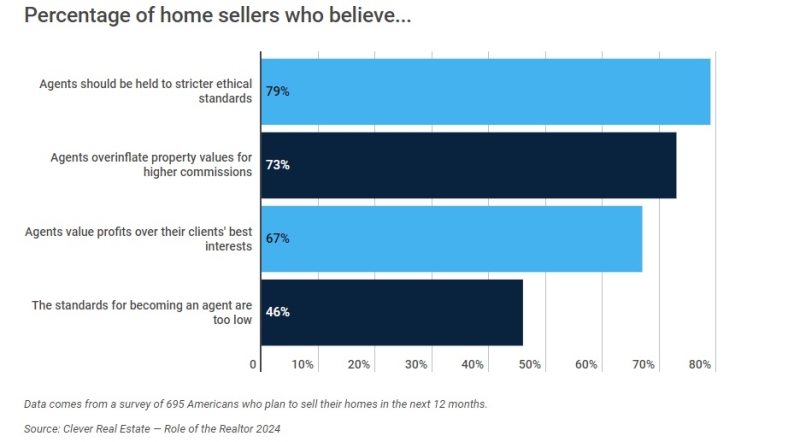Advertisement
Lynne Haney joins Chase Mortgage team in Concord
Flood servicing 101Steve Grantflood insurance, flood zones, flood reports, Federal Disaster Protection Act
A few years ago a book titled "Don't Sweat the Small Stuff...and
it's All Small Stuff" by Richard Carlson topped the charts. As the
title suggests, it's about simple ways to keep the little things
from taking over your life. While that's excellent personal advice,
as a mortgage broker, you know there is an enormous amount of
details that you need to attend to on a daily basis.
As you are aware, lenders are required by the Federal Disaster
Protection Act of 1973 and the Flood Insurance Reform Act of 1994
to determine whether or not a mortgaged property needs flood
insurance. The law also mandates that coverage be kept for the life
of the loan. Flood zone determination outlines if there have been
floods on a property and the financial risk associated with buying
or building a home in a zoned area. This, in turn, protects lender
investments as well as helps prepare clients in the event disaster
strikes. Nearly 4.5 million people hold flood insurance policies in
almost 20,000 "high-risk" areas across the U.S.
Determining flood zones to secure funding for a mortgage is just
another one of the "little things" that could overtake your day.
Fortunately, there are companies such as Credit Plus Inc. that
offer bundled services including credit reporting and flood
information services to alleviate the stress of floods. But how do
you avoid getting swamped with flood-related concerns, and what
details should you have your third party address? The next few
paragraphs will help you keep afloat in the world of floods.
Flood reporting responsibility
In high-risk areas, there is more than a 25 percent chance that a
house will experience a flood during the course of a 30-year
mortgage. Therefore, in order to protect the lender's investment,
your number one goal regarding floods should be to determine if the
house that is going to be purchased is in a flood zone. If it is,
the potential borrower will have to secure flood insurance in order
to obtain a mortgage. This information is gleaned from a flood
report that includes all of the data necessary for closing a loan.
Included in the report is the National Flood Insurance Program
community name along with the date ordered, date completed, a
reference number, a loan identification number and the borrower's
name, address, city, state, zip code and zone designation.
On a flood report, there are seven designations that require the
purchase of federal insurance. These classifications are based on
the "100-year floodplain," a formula developed by the federal
government that determines a "best guess" of stream flow peaks over
time. It reviews elevations of land with a "one-in-one hundred
chance (one percent) of floods occurring in any given year." Since
it is measured annually (although some regions will have more
frequent updates to their zoning than others due to repetitive
hazardous weather or catastrophic events), the chances of this
level of flooding reoccurring in a short period of time are
considerable. Designations include:
•A: Areas of 100-year flood, base flood elevations, and
flood hazard factors not determined
•AO: Flood depths of one to three feet (usually sheet flow
on sloping terrain), average depths determined, areas of alluvial
fan flooding, velocities determined
•AH: Flood depths of one to three feet (usually areas of
ponding), base flood elevations determined
•AE, A1-A30¬: Areas of 100-year flood, base flood
elevations, flood hazard factors determined
•A99: To be protected from 100-year flood by federal flood
protection system under construction, no base flood elevations
determined
•V: Areas of 100-year coastal flood with velocity (wave
action), base flood elevations, flood hazard factors not
determined
•VE, V1-V30: Areas of 100-year coastal flood with velocity
(wave action), base flood elevations, flood hazard factors
determined
Not only should you investigate if a current house is in a
floodplain, but if a potential borrower comes to you for a
construction loan, you will also want to have a flood report pulled
for the land he or she plans to build on.
If a potential client wants to build in a high-risk zone, both
the community and individuals can make adjustments to the land to
reduce the risk of flood damage. If the lender and the builder
comply with flood-zone building regulations, elevation certificates
can be prepared and certified by either an authorized land
surveyor, engineer or architect. Authorized floodplain information
management officials in the county may also sign the certificate.
For instance, in Sacramento, Calif., man-made alterations to the
land have reduced the flood risk from a level A flood zone to a
level B flood zone, which does not require flood insurance for the
life of the loan.
With advancements in technology and continuous updates in flood
zone mapping, some companies are able to pull flood zone
information within moments. An entire report can be compiled within
24 hours.
The life-of-loan lowdown
While flood reports have to be pulled in order to secure a
mortgage, flood insurance must also be maintained for the life of a
loan. Fortunately, experts in the industry will monitor zoning maps
daily and keep borrowers informed on the status of the zones where
their loans apply. This information allows brokers to keep their
clients updated on the necessity for flood insurance on their
home.
Because brokers must multi-task in a range of areas that require
specific attention to detail, most do not want to handle the many
elements of this extensive monitoring process. There are many
third-party companies that offer their services individually or as
part of bundled services, so that flood servicing and credit
reporting are accessible as one package. By having the most
accurate, up-to-date knowledge on flood reporting, you won't drown
in the details.
Steve Grant is president and CEO of Credit Plus Inc., based
in Salisbury, Md. He may be reached at (800) 258-3488 or e-mail [email protected].
About the author





